If you harbor a desire to engage in commercial real estate investing, wide-reaching and lucrative opportunities are available. But the question is not necessarily whether you want to improve your wealth. It’s how to invest without taking a major risk.
Common Commercial Real Estate Investing Strategies
Depending on your experience and financial situation, there are strategies that relative beginners can successfully implement and commercial real estate loan financing to help your vision become a reality. The following investment strategies involve varying degrees of investment risk, financing pathways, and a heavy reliance on due diligence.
The Commercial BRRRR
When residential property owners consider the transition to commercial real estate investing, the seemingly stark differences sometimes deter them. But upon further review, the commercial BRRRR method offers investors enough familiar overlap to feel confident enough to move forward. The “BRRRR” isn’t a reference to winter’s chill and needing to warm up by a fire. Rather, it’s an acronym for Buy, Rehab, Rent, Refinance, Repeat, and that’s a strategy quite similar to residential house-flippers.
The commercial BRRRR approach continues to gain traction because it avoids one of the primary impediments in traditional residential investing. Lenders typically want a 20 percent down payment to approve a loan. By contrast, this commercial counterpart doesn’t necessarily require entrepreneurs and investors to tie up that much cash. The following highlight the key points.
- Buy: Purchase a property below market value with cash to avoid financing.
- Rehab: Make renovations that cause the property to appreciate relatively quickly.
- Rent: Signs leases and start generating commercial income.
- Refinance: Work with an experienced lender to refinance the property based on its improved value and steady revenue.
This strategy essentially turns the commercial real estate investing process upside down. By applying for commercial real estate loan financing last, business professionals are able to extract their investment and a profit from commercial property and leverage the money to repeat the business model.
Development
Although developing a parcel from scratch typically creates the greatest opportunity to make a high profit, it also carries tremendous risk. Developers tend to be a rarity because the experience necessary to take a plot of land and turn it into a retail shopping mall, warehouse facility, or industry park involves planning, construction, and financing savvy. If you possess the background or can pull together a small team of experts, these are the common commercial real estate investing steps developers follow.
- Purchase the Right Parcel: Conduct thorough due diligence and find an unused parcel that meets your development criteria in terms of location, zoning regulations, utility access, topography, and population demographics. If any of those items do not sync with the final project, look elsewhere.
- Site Creation: Work with experienced architects and engineers, among others, once you believe you found a suitable land tract. Before applying for commercial real estate loan financing, conduct a feasibility study, site layout mock-up, and market strategy.
- Secure Construction Financing: With a parcel and due diligence in hand, lenders are more likely to approve commercial real estate loans for proposed developments. An experienced lender will likely review your financials, projections, creditworthiness, collateral, and expect you and your partners to invest money of your own.
- Construction Oversight: A background in construction and general contracting can prove invaluable at this stage of a development. There are wide-reaching moving parts even in a modest development, and missteps are expensive. If you don’t possess construction experience, consider hiring a general contractor to oversee the project.
Once the construction phase gets underway, start marketing the development to potential tenants and/or buyers. Commercial real estate investment focuses on earning a profit and furthering financial goals. Whether you decide to sell or lease the development, base that decision on hard numbers.

Land Banking
Patient investors sometimes prefer to focus on select financial ventures while others take the lead on a land project. The process involves securing a parcel — through commercial real estate loan financing or cash — that enjoys long-term commercial development value. With the right zoning and location, a seemingly passive investment in, well, dirt, can generate a substantial profit.
By slow-walking a project, interested parties can be brought in to purchase the land and development before completion. In some instances, landowners partner with developers who see the project to fruition. Land banking is quite similar to straightforward development but with a hands-off approach.
Long-Term Buy And Hold
The moniker given to this commercial real estate investing strategy sounds like a new type of poker. But when orchestrated smartly, the strategy minimizes risk and can prove profitable with almost any kind of property. Business professionals generally select long-term buy and hold property based on the following factors:
- Involvement: People actively involved in day-to-day operations stand to garner a significant profit. Financing a commercial building and leasing space can provide immediate profitability while real estate values increase. If you prefer a hands-off approach, single-tenant investments remain abundant.
- Ability to Tolerate Risk: Investors who prefer to build steady, low-risk wealth would be well-served to finance traditionally stable assets. Although aggressive risk-takers sometimes hit big, taking losses can damage your portfolio.
- Long-Term Goals: Before securing financing for a given commercial property, consider long-term goals. This facet influences the type of commercial real estate loan you apply for and the leasing strategy.
Buying long-term hold investments is usually based on the income they generate. Conduct a thorough analysis of existing leases and calculate rising taxes, maintenance costs, and other overhead. It’s crucial that rent escalators are in place to ensure steady revenue exceeds expenses as the commercial real estate loan gets paid down. A well-thought-out buy-and-hold investment positions the property owner with a paid-off commercial building after years of enjoying an income.
To discover how commercial real estate loans can help your business, download our free guide:
Owner-Occupied
Startup businesses operate under passive risks such as landlords selling the building, rent increases incorporated into new leases, or property owners deciding not to offer a renewal. Owner-occupied commercial real estate investing basically flips that script. Your business purchases a commercial building and rents unused space to repay the loan.
Along with a stable working footprint, investors generally gain tax advantages, stable overhead costs, and increased asset diversification. Not only do you own and operate a business, but your organization also possesses a real estate asset. Business decision-makers who are outgrowing a location or paying excessive rent may be good candidates. These are typically commercial real estate loan requirements to consider.
- Loan-to-value ratio for purchases of 80 percent of purchase price or appraised value, whichever is less (hotel properties are 70%).
- Loan-to-value ratio for refinances of 80% of appraised value.
- Review of financial statements and business creditworthiness.
- A borrower’s credit score usually must be 650 or higher.
- Debt service coverage ratio of 1.25x or better.
- Personal guarantees are required.
- Three of five years of business taxes.
Lenders tend to scrutinize commercial real estate loans to ensure a borrower’s operation can generate the revenue to make repayment consistently. But this commercial real estate investing strategy can deliver enhanced financial security on multiple levels.
Choosing the Right Site For Your Commercial Real Estate Investment
Employing these and other commercial strategies begins with finding the right building or parcel and then investing. Financial success requires determined due diligence and prudent, fact-based decisions. Only after the numbers prove a stable revenue stream can be accessed does it make sense to buy a property or apply for a commercial real estate loan.
How to Finance Your Commercial Real Estate Investments
One of the sometimes overlooked commercial real estate investing strategies involves the source of financing. Entrepreneurs and investors focused on the property or project may not realize that credit unions offer low-interest commercial real estate loans.
Credit unions are experienced lenders that not only provide access to these loans and other resources, but they also support local businesses of all sizes and are focused on helping their local community thrive. In terms of applying for a commercial real estate loan, perhaps the best way to find the right loan product to serve your goals is to speak with a local lending professional about your unique business needs.
At Carolina Trust Federal Credit Union, we know that sometimes, you need a little extra money to maintain and grow your business, and we get it. Whatever it may be, don’t worry— we’ve got a loan for that.




